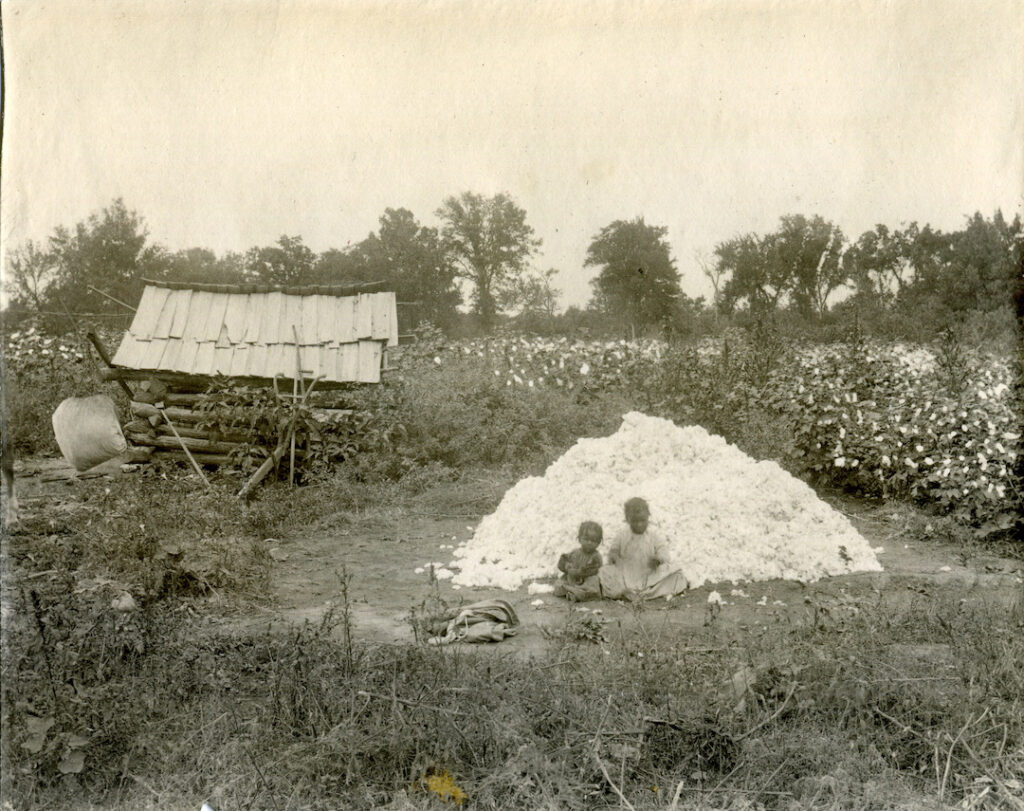Artwork: Two children near cotton, photographer unknown. Source: Oklahoma Historical Society.
The enslavement of Black people among Cherokees began after it was introduced by Europeans in the 17th century. Forms of captivity already existed among the tribe, but the slavery of African-descended people was especially exploitive and dehumanizing. By the early 1800s, elite, mostly bicultural Cherokees had begun to adopt the ideas and lifestyle of American plantation owners, including the use of Black slaves in agriculture.

Artwork: Joseph Vann, artist unknown. Source: Oklahoma Historical Society.
Some Cherokees, such as Joseph Vann at his Diamond Hill plantation in present-day Georgia, soon began to grow individual wealth from the enslavement of Black people. Vann was not alone. By 1835, slaveholders such as John Ross, Lewis Ross, David Vann, and John Ridge — Cherokee leaders, all — comprised a distinct economic upper class within Cherokee Nation. This shift away from traditional Cherokee culture was agreeable to the U.S. government, but it did not stop Cherokee Removal.
Enslaved people joined their Cherokee owners on the Trail of Tears in 1838 – 39. They likely translated for their owners and performed physical labor in addition to facing hardship and illness. Arriving in Indian Territory, they helped Cherokees rebuild their lives, homes, and farms. This likely widened the class divide, as elite Cherokees with enslaved labor more quickly financially recovered and rebuilt. The post-Removal years were marred by violence between Cherokees who supported signers of the Treaty of New Echota (1835) and those vehemently opposed to Removal. During this time, Cherokee Nation began to outlaw many of the small freedoms previously possible for enslaved people.


